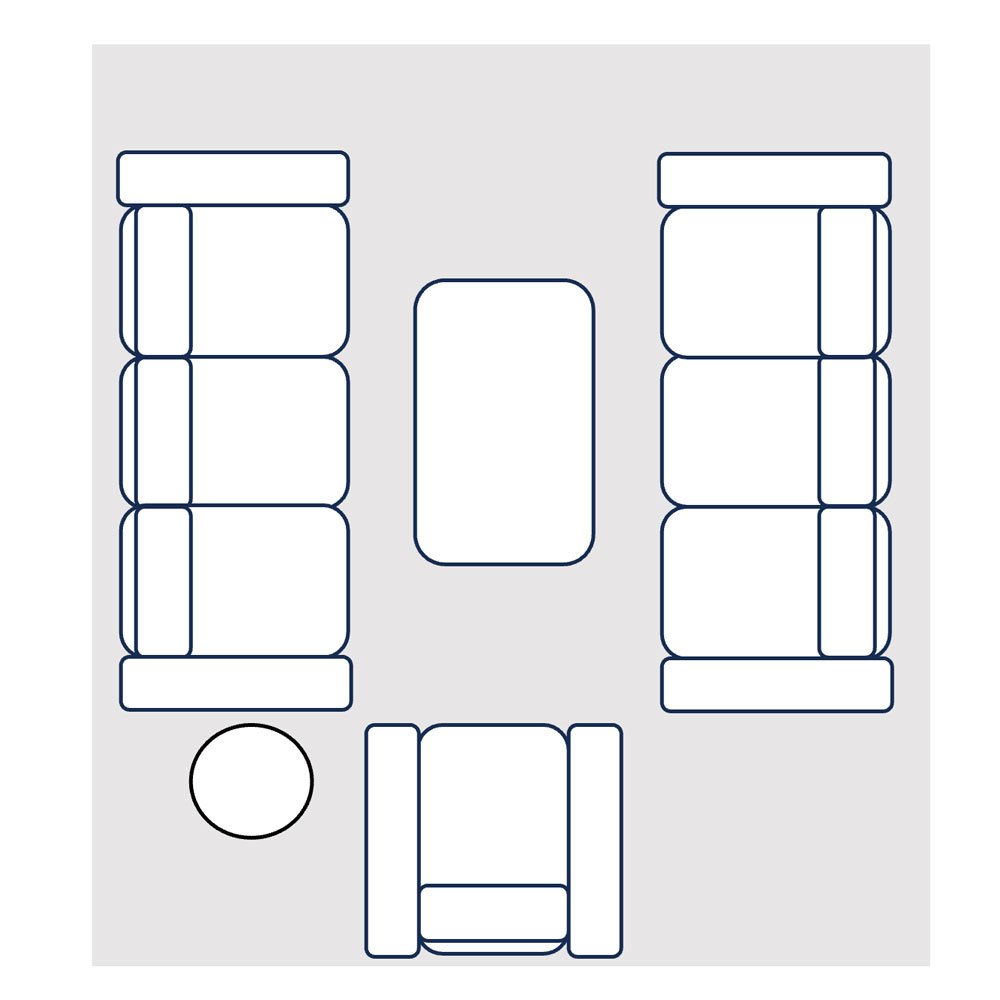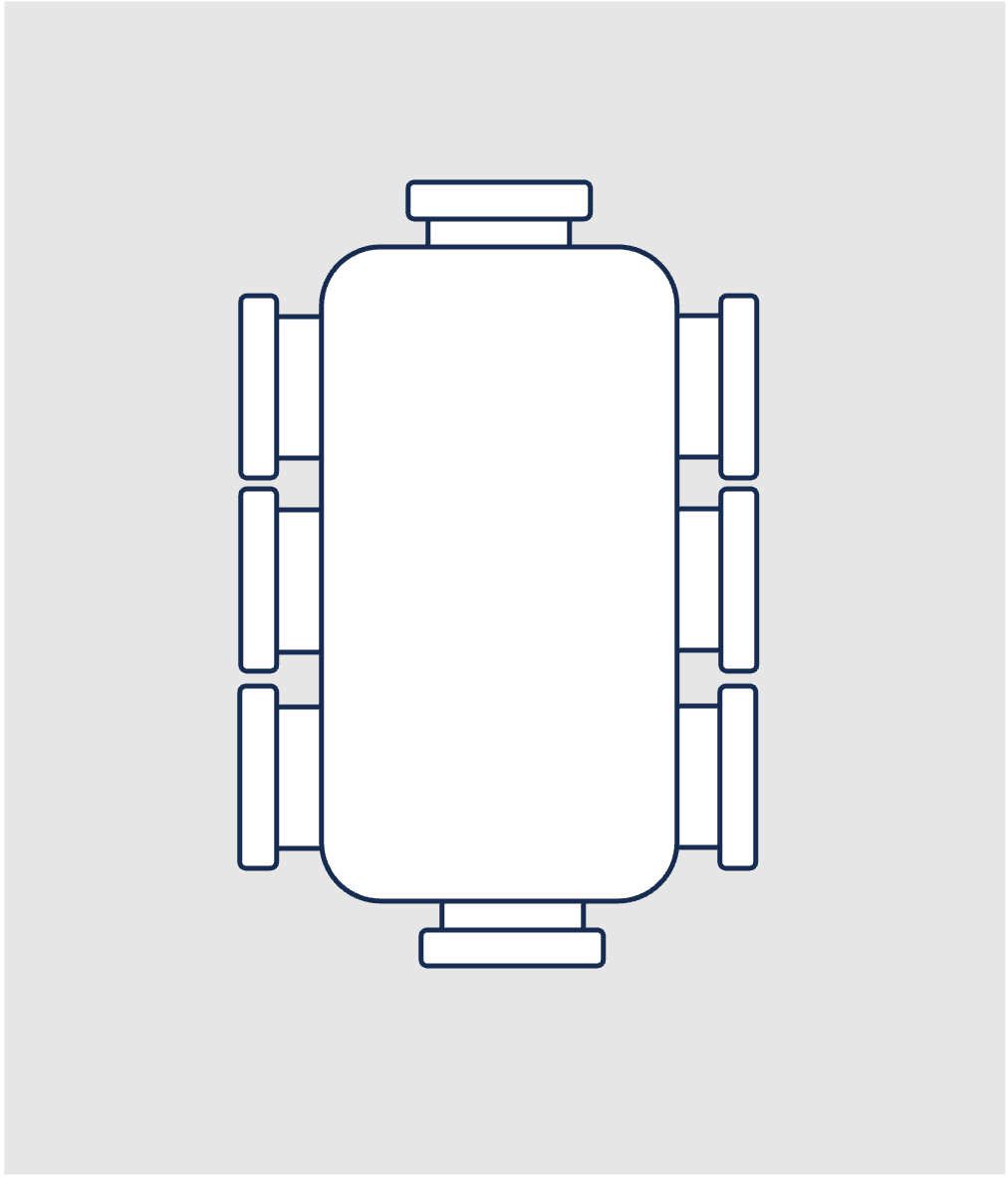The Ultimate Rug Placement Guide
Before you think about a rug, ALWAYS start with an overall floor plan for your space.
Are you guilty of shopping without a measuring tape? Guessing what will fit and where it will go?
Rug placement is a key part of an overall design floor plan because it plays a significant role in defining a space's layout, functionality, and aesthetics. We always start the design process with a well-thought-out floor plan. Then, it’s easy to integrate your rug placement with other elements, for a cohesive and practical design.
Here's how rug placement fits into the larger floor plan:
1. Defines Spatial Zones
Open-Concept Spaces: In larger or open-concept areas, rugs help divide the room into functional zones, like separating the living area from the dining or workspace.
Room Functionality: Rugs anchor furniture groupings. If you’re creating a seating area in the living room, a rug will provide a visual boundary that guides movement and use.
2. Supports Furniture Layout
Proportion and Balance: Rugs serve as the foundation for furniture arrangement.
A living room rug typically aligns with the sofa, chairs, and coffee table to create a balanced seating arrangement.
A rug is usually placed under the bed in a bedroom, extending beyond it for visual impact and comfort.
Traffic Flow: Placing rugs within the floor plan lets you direct traffic patterns without disrupting movement. As and example, in high traffic areas, you can swap out a rectangle rug for a round one to direct the flow of traffic.
In this floor plan, the edge of a rectangle rug will be worn out from traffic.
In this floor plan, using a round rug directs traffic and saves on wear-and-tear.
@therugcollection
Once you’ve designed a scale floor plan for the entire space, you can work out how big the rug needs to be.
Choosing the right rug
There are four reasons to stop and read further BEFORE making a rug purchase:
1. Determine the Size
Choosing a rug without considering placement may result in purchasing one that's too large or too small for the intended area. For example:
In a living room, the rug should ideally extend under all front legs of the furniture or completely encompass the seating area.
In a dining room, the rug should be large enough to allow chairs to slide in and out without catching on the edges.
@therugcollection
2. Choose your Design Style
Rugs are often a focal point of a room, anchoring the design. Knowing where the rug will go ensures it complements other elements, such as furniture, lighting, and accessories, without overwhelming or underwhelming the space.
Read More: Rug Buying Guide
3. Avoid Costly Mistakes
Buying a rug without considering placement might lead to regrets if it doesn't fit well or support the room’s function. Starting with placement helps you avoid having to return or replace an expensive item.
4. Refine your Colour and Pattern Choices
Once the placement is determined, you can decide if the rug should be a bold statement piece or a neutral backdrop, depending on its role in the room's design. Choose a rug that complements the room's colour scheme and style to unify the design.
Rug Placement
Measure the intended space and layout.
Use painter’s tape to outline the rug’s size and position on the floor.
Visualize how the furniture will sit on or around the rug.
Rugs generally come in four sizes that differ slightly by manufacturer.
Small - 160/170cms by 230/240cm
Medium 200cm x 290/300cms
Large 250/270cm x 350/360cm
X-Large 300cm x 400/420cm
Rug placement is about anchoring the space and creating a zone. As a rule of thumb, we recommend going with the largest rug that you can fit into the designated space.
Cosy and Compact
In smaller rooms, odd-shaped floor rugs can be used to sit under the coffee table to define a seating area. This also works to define the space an office desk sits on.
Modestly Proportioned
When furniture is against a wall, aim to have the front legs of all furniture on the rug. This applies to the sofa and the occasional chairs.
Luxuriously Large
The best result, and generally in larger rooms, is to fit all the furniture pieces on top without feeling cramped.
The Perfect Rug Pairing
A round rug under a round table creates visual harmony by echoing the table's shape, enhances balance, and defines the dining area with a cohesive look.
Dining Rug Space Considerations
Your table and chairs should all rest on the floor rug. Always ensure there is at least 50cm extending beyond all sides of the table so they stay on the rug when chairs are pushed back.
Placing a rug under a bed adds comfort by providing a soft, warm surface to step onto, anchors the room’s design, and enhances visual balance.
A rug under the bed should extend far enough to provide a soft, warm surface for your feet when getting in and out of bed. This enhances comfort, prevents cold floors from being a jarring start to your day, and adds a sense of luxury to the space.
Placing a round rug on the side of the bed can work beautifully, especially if the other side is against a wall. It adds a soft, decorative touch while creating visual interest and a sense of symmetry in an asymmetrical layout. To maximize functionality and design, make sure that it’s large enough to accommodate stepping onto it comfortably. Align part of the rug under the bed to anchor it visually while leaving most of it exposed for balance.
A room benefits from a rug because it:
Defines the Space: Rugs anchor furniture arrangements, creating distinct zones for function and flow.
Adds Comfort: They provide a soft, inviting surface underfoot, making spaces feel cosy.
Enhances Design: Rugs introduce colour, texture, and pattern, tying together the room's decor.
Improves Acoustics: Rugs reduce echoes and soften noise, making rooms quieter and more comfortable.
Protects Floors: They shield flooring from scratches, wear, and stains, preserving its condition.
Adds Warmth: Rugs provide insulation, keeping rooms warmer and more energy-efficient.
A rug is both functional and decorative, elevating a room's comfort and style.
You might like to also read our Rug Buying Guide to learn more about materials and choices.











